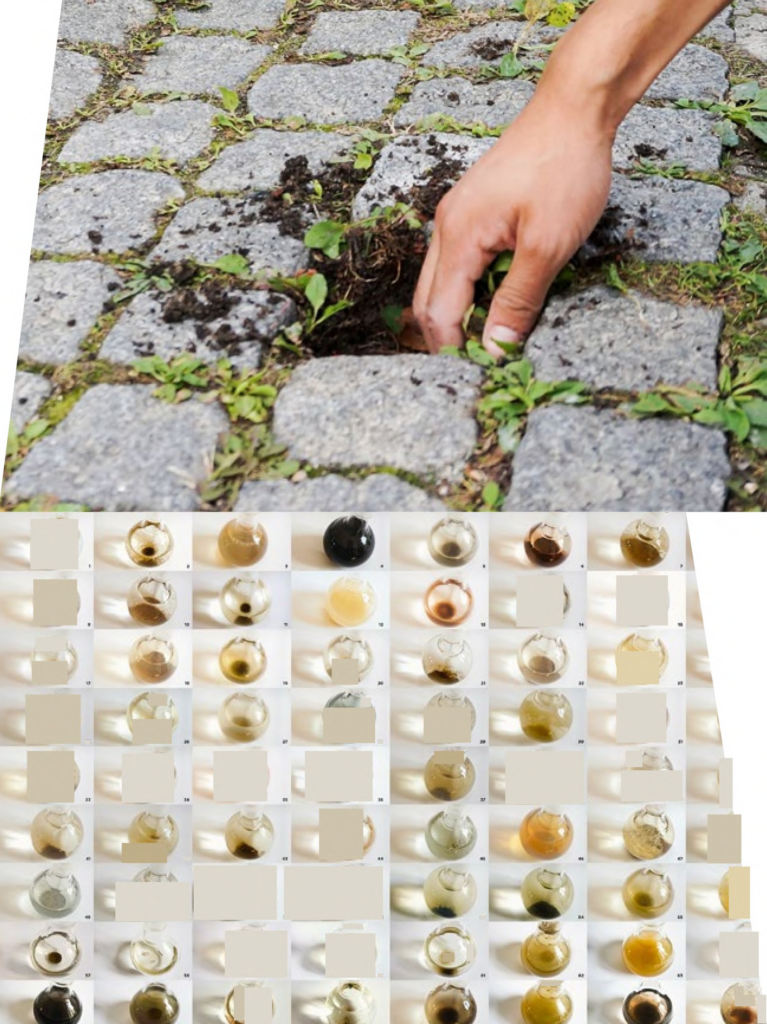ANAÏS TONDEUR
Born 1985 in Paris, France, where she lives and works
Urban Petrichor (2015-ongoing), Fragments of Soil (2024)

Anaïs Tondeur is an artist who uses image-based and olfactive investigations as anthropological tools. Her installations interweave fieldwork and fiction to consider the urban condition and its relationship to ecology. Having studied at Central Saint Martins and the Royal College of Art in London, she was awarded the Prix Photographie & Sciences (2023) and Prix Art of Change 21 (2021). She has also completed multiple residencies, including at the Musée des Arts et Métiers and the Muséum national d’Histoire naturelle in Paris. Exploring ways to reintegrate human life into the natural cycles of the earth, she creates protocols of attention focusing on soil, plants, and the atmosphere. Tondeur’s research-based practice is driven by an interdisciplinarity approach, which have taken her on expeditions to places such as the boundaries of tectonic plates, the Chernobyl exclusion zone, and the infrastructure of tunnels beneath the city of Paris.
Urban Petrichor (2015–ongoing) stems from an investigation into the traces of the petrichor, the smell of soil after rain. In her collaboration with anthropologist Germain Meulemans, the artist invited over one hundred inhabitants to turn their attention to the organic processes thriving in the cracks of city pavement. During collective walks through Paris and its immediate surroundings, they collected urban soils, which were then distilled using the traditional process of hydrodistillation. In the display, the soil distillates are shown in suspended Florence flasks. Their contents are continually transforming in a visible alchemy, while casting shifting shadows and reflecting light.
In this process they reenact a protocol of a nineteenth-century Parisian chemist who studied mud through scent, devoting years of research to the oxidized earth under and between the city’s cobblestones. Creating the first olfactory palette of Paris soils, Tondeur and Meulemans are not searching to convey petrichor as a substance but as a process arising from a complex set of reactions between atmosphere, soil, and microorganisms in the earth. The metamorphic quality of the work urges reflection on how the ground and the sky, two entities that modern thinking about the city has tended to separate, may once again be brought into correspondence.
